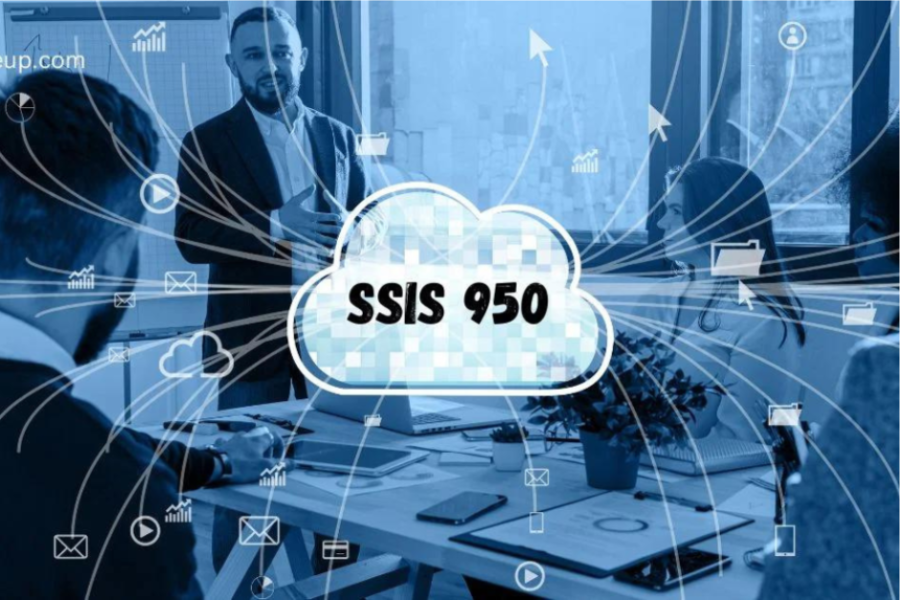SSIS 950: The Ultimate Tool for Modern Data Management
In an era where data is increasingly at the heart of business decisions, organizations require robust tools to manage and harness the wealth of information available from various sources.
SQL Server Integration Services (SSIS) 950 emerges as a formidable solution, providing businesses with the means to streamline data management processes while gaining critical insights. This article delves into the features, benefits, and practical applications of SSIS 950, showcasing how it can elevate data integration efforts and enhance overall business efficiency.
What is SSIS 950?
SQL Server Integration Services 950, or SSIS 950, is a comprehensive data integration and transformation tool developed by Microsoft. Part of the SQL Server suite, SSIS 950 is tailored to handle intricate data integration tasks, enabling organizations to extract, transform, and load (ETL) data from diverse sources into a cohesive view.
This capability facilitates effective data analysis and utilization, making it an essential component for modern businesses.
Getting Started with SSIS 950
Installation and Setup
To embark on your journey with SSIS 950, begin by downloading the tool from the official Microsoft website or your organization’s software repository. After acquiring the installer, execute it to launch the installation wizard.
The installation process allows you to select your preferred installation type—whether standalone, integrated with SQL Server, or a custom setup. You can configure various installation settings, including the installation path, feature selection, and authentication mode. After confirming your selections, initiate the installation and await its completion.
Configuration Steps
Upon successful installation, you can kick off your first SSIS project using SQL Server Management Studio (SSMS) or SQL Server Data Tools (SSDT). Start by establishing connections to your data sources, such as SQL Server databases or Excel files. Next, design data flows to facilitate the movement of data between these sources. Control flow tasks can be utilized to manage and organize the steps within your data integration workflow.
Package Configuration
Package-level settings are crucial for efficient operation. Configure logging, event handling, and package parameters to enhance the functionality of your SSIS packages. Enabling logging will help you capture detailed execution information, including errors, warnings, and general information.
Additionally, using package parameters allows you to create dynamic and reusable SSIS packages, facilitating easier adjustments and scalability.
Testing and Execution
Before deploying your SSIS package, it’s vital to validate its configuration by running it in debug mode. Monitor the execution progress closely, addressing any issues that may surface during this phase. To optimize performance, you might need to adjust buffer sizes, parallel processing capabilities, and various data flow transformations.
Highlighting Key Features of SSIS 950
Streamlined Data Integration Process
One of the standout features of SSIS 950 is its intuitive interface, which simplifies the design of complex data flows. The visual drag-and-drop functionality allows developers to seamlessly connect data sources, apply transformations, and define destinations.
Additionally, the use of reusable components—such as custom tasks and scripts—enhances productivity by enabling users to leverage pre-built functionalities.
Improved Performance and Scalability
SSIS 950 brings several performance optimizations to the table, significantly enhancing data movement and processing speeds. The introduction of parallel processing capabilities allows multiple tasks to be executed concurrently, which not only improves performance but also increases scalability.
This makes SSIS 950 a suitable choice for organizations dealing with both small datasets and massive volumes of data.
Enhanced Security Features
In a time when data security is paramount, SSIS 950 offers enhanced security measures. Features such as encryption for data at rest and in transit, fine-grained access control, and secure credential management help protect sensitive information. The tool’s capabilities in handling sensitive data contribute significantly to privacy protection.
Robust ETL Capabilities
At the core of SSIS 950 lies its extensive ETL functionality. Users can efficiently extract data from a variety of sources, transform it to meet specific business needs, and load it into target destinations. This robust ETL process ensures that data remains accurate, consistent, and readily available for analysis, paving the way for informed business decisions.
High Performance and Scalability
SSIS 950 is engineered to accommodate large datasets, providing high performance and scalability that meets the demands of modern businesses. Its architecture is designed for rapid data processing, making it an ideal tool for organizations that require efficient data integration solutions.
Integration with Microsoft Ecosystem
As part of the Microsoft SQL Server suite, SSIS 950 seamlessly integrates with other Microsoft products, such as SQL Server itself, Azure, and Power BI. This interconnectedness amplifies data management and analytics capabilities, enabling businesses to harness the full potential of their data.
User-Friendly Interface
SSIS 950’s user-friendly interface is a significant advantage, allowing users to design and execute data integration workflows without requiring extensive coding knowledge. The drag-and-drop functionality makes it accessible to both technical and non-technical users, democratizing data management within organizations.
Advanced Data Transformation Tools
The tool offers a diverse array of data transformation tools, enabling users to manipulate and filter data according to their specific requirements. From data cleansing and sorting to merging and aggregating, these transformation capabilities empower businesses to customize their data integration processes effectively.
Benefits of Using SSIS 950
Improved Data Quality
Leveraging the advanced ETL capabilities of SSIS 950 helps businesses ensure that their data is accurate, consistent, and free of errors. The tool’s data cleansing and transformation features allow for the identification and correction of anomalies, leading to enhanced data quality.
Enhanced Business Insights
By consolidating data from multiple sources into a unified view, SSIS 950 provides businesses with a comprehensive understanding of their operations. This holistic perspective enables more informed decision-making, as the consolidated data can be analyzed using advanced analytics tools like Power BI.
Increased Efficiency
Automation and high performance are key attributes of SSIS 950, streamlining data integration processes and reducing the time and effort required for data management. This increased efficiency allows organizations to focus on their core activities rather than getting bogged down by manual data handling tasks.
Cost Savings
Through improved data quality and efficiency, SSIS 950 contributes to cost savings in data management and analysis. Its seamless integration with existing Microsoft products minimizes the need for additional software solutions, further enhancing cost-effectiveness.
Applications of SSIS 950
Data Warehousing
SSIS 950 is commonly employed in data warehousing scenarios to extract data from various sources, transform it to meet business needs, and load it into a centralized data warehouse. This capability enables organizations to effectively store and analyze large volumes of data, providing a solid foundation for business intelligence initiatives.
Data Migration
For businesses undergoing system upgrades or transitions to new platforms, SSIS 950 offers robust data migration capabilities. The tool ensures that data is accurately transferred from legacy systems to new environments, significantly reducing the risk of data loss or corruption during the migration process.
Data Integration for Business Intelligence
SSIS 950 plays a critical role in preparing data for business intelligence applications. By integrating data from diverse sources, it lays the groundwork for comprehensive analysis and reporting, helping businesses gain valuable insights and make strategic decisions.
Cloud Data Integration
With the increasing adoption of cloud technologies, SSIS 950 is equipped with strong capabilities for integrating on-premises data with cloud-based systems like Azure. This ensures a seamless data flow between different environments, supporting modern data management strategies and enhancing flexibility.
Milestones in SSIS Development
The evolution of SSIS has been marked by significant milestones that showcase its growth and increasing functionality:
- Data Transformation Services (DTS) in SQL Server 7 (1998): DTS initiated the journey of data integration tools, offering basic data export, import, and task automation, albeit with limited capabilities.
- SQL Server 2000: As SQL Server gained popularity, DTS evolved, being initially managed through SQL Server Enterprise Manager and later through SQL Server Management Studio (SSMS), with enhancements in connections and tasks.
- SQL Server 2005 (SSIS 2005): The introduction of SSIS marked a significant shift, allowing developers to create packages through Business Intelligence Development Studio (BIDS), thus expanding the toolbox significantly.
- SQL Server 2008 (SSIS 2008): Enhancements included the addition of ADO.NET source, Data Profiler, improved lookup transformation, and support for Change Data Capture, making SSIS more robust.
- SQL Server 2012 (SSIS 2012): The transition from BIDS to SQL Server Data Tools (SSDT) marked a new era, introducing features like SSIS Deployments and additional connectors for enhanced capabilities.
- SQL Server 2014 (SSIS 2014): SSDT required a separate installation and integrated into Visual Studio, continuing to enhance the toolbox with new options for data integration tasks.
- SQL Server 2017 (SSIS 950): The introduction of Scale Out Master and Worker features for improved scalability, support for Microsoft Dynamics applications, and compatibility with Linux positioned SSIS 950 as a cutting-edge tool for data integration.
Conclusion
SSIS 950 stands as a powerful tool that revolutionizes data integration and management processes. With its extensive ETL capabilities, high performance, and seamless integration within the Microsoft ecosystem, SSIS 950 proves invaluable for businesses striving to enhance their data management strategies.
By adopting SSIS 950, organizations can significantly improve data quality, gain enhanced business insights, and increase operational efficiency, ultimately leading to more informed decision-making and the achievement of key business objectives.
(FAQs)
What is the SSIS-950 certification exam?
The SSIS-950 certification exam is designed to validate the skills and knowledge of individuals in using SSIS 950 for data integration and management tasks. This certification demonstrates proficiency in ETL processes, data transformation, and using the tool’s advanced features effectively.
How do I register for the SSIS-950 exam?
To register for the SSIS-950 exam, you can visit the official Microsoft certification website, where you’ll find detailed information on registration procedures, exam availability, and scheduling options.
What are the best resources for SSIS-950 exam preparation?
Effective resources for preparing for the SSIS-950 exam include official Microsoft documentation, online courses, practice tests, and community forums. Additionally, hands-on practice with SSIS 950 in a development environment can significantly enhance your readiness for the exam.
How often is the SSIS-950 exam updated?
Microsoft periodically reviews and updates its certification exams to ensure they reflect the latest features and best practices. It’s advisable to check the official Microsoft certification site for the most current information on the SSIS-950 exam.
Can I retake the SSIS-950 exam if I fail?
Yes, candidates can retake the SSIS-950 exam if they do not pass on their first attempt. However, there may be a waiting period before you can register for a retake, so be sure to review the specific retake policy outlined by Microsoft.
Stay connected with the latest news and stories from Toronto at torontotimes.






